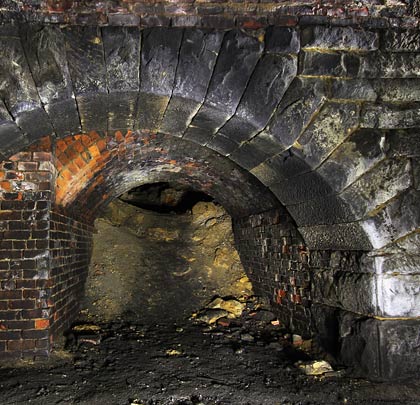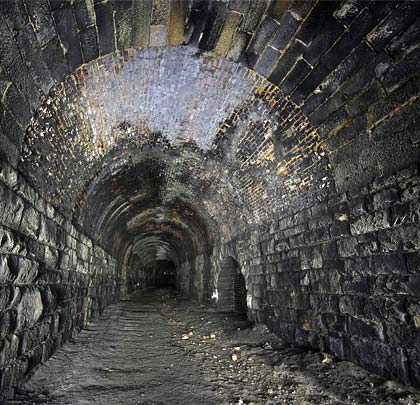Kettleness Tunnel
Kettleness Tunnel




























Like its sibling neighbour Sandsend, Kettleness is a tunnel which never should have been. When the Whitby, Redcar & Middlesbrough Union Railway began work on its Loftus-Whitby route in 1871 – five years after obtaining its enabling Act – the plan was to build the line along the edge of the cliffs. Work ground to a halt in 1874 when the contractor went into liquidation; when it resumed under the auspices of the North Eastern Railway, the original formation was deemed too dangerous – some of it having collapsed into the sea – and the track was re-routed via two tunnels further inland. The line opened with little ceremony on 3rd December 1883.
Kettleness, by far the shorter of these tunnels, is 308 yards in length and was built to accommodate a single line. Throughout it incorporates a tight curve of around 14 chains radius and a falling gradient to the south of 1:62. There are no ventilation shafts but close to the midpoint is an adit which was driven out to the cliff-face, allowing spoil from the workings to be tipped onto the shore. This has either been part-backfilled or suffered a substantial collapse.
The last train passed through the tunnel in May 1958. Approached through a shallow cutting, its north portal is very modest, built in stone and incorporating a short triangular wing wall on its west side only. Inside the tunnel is generally dry and benign. The masonry sidewalls, incorporating refuges on both sides, support a brick arch until a point just to the south of the adit; thereafter the arch is stone. At the south end, the portal is rather larger, with the east-side wing wall extending towards the cliff edge whilst the other runs parallel to the trackbed, acting as a retaining wall for the steep cutting side.
For the tunnel’s full story, click here.
 July 2014
July 2014





